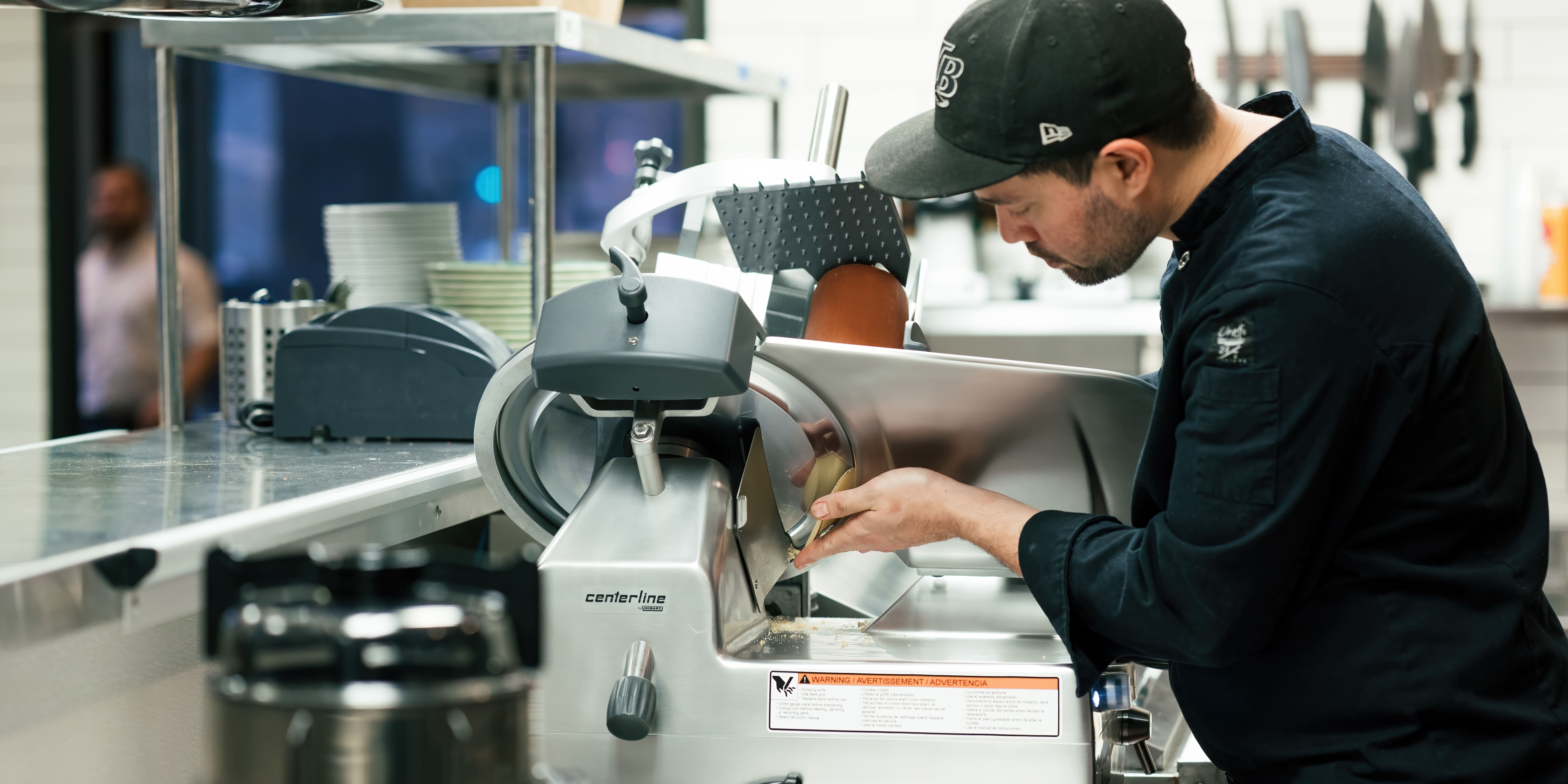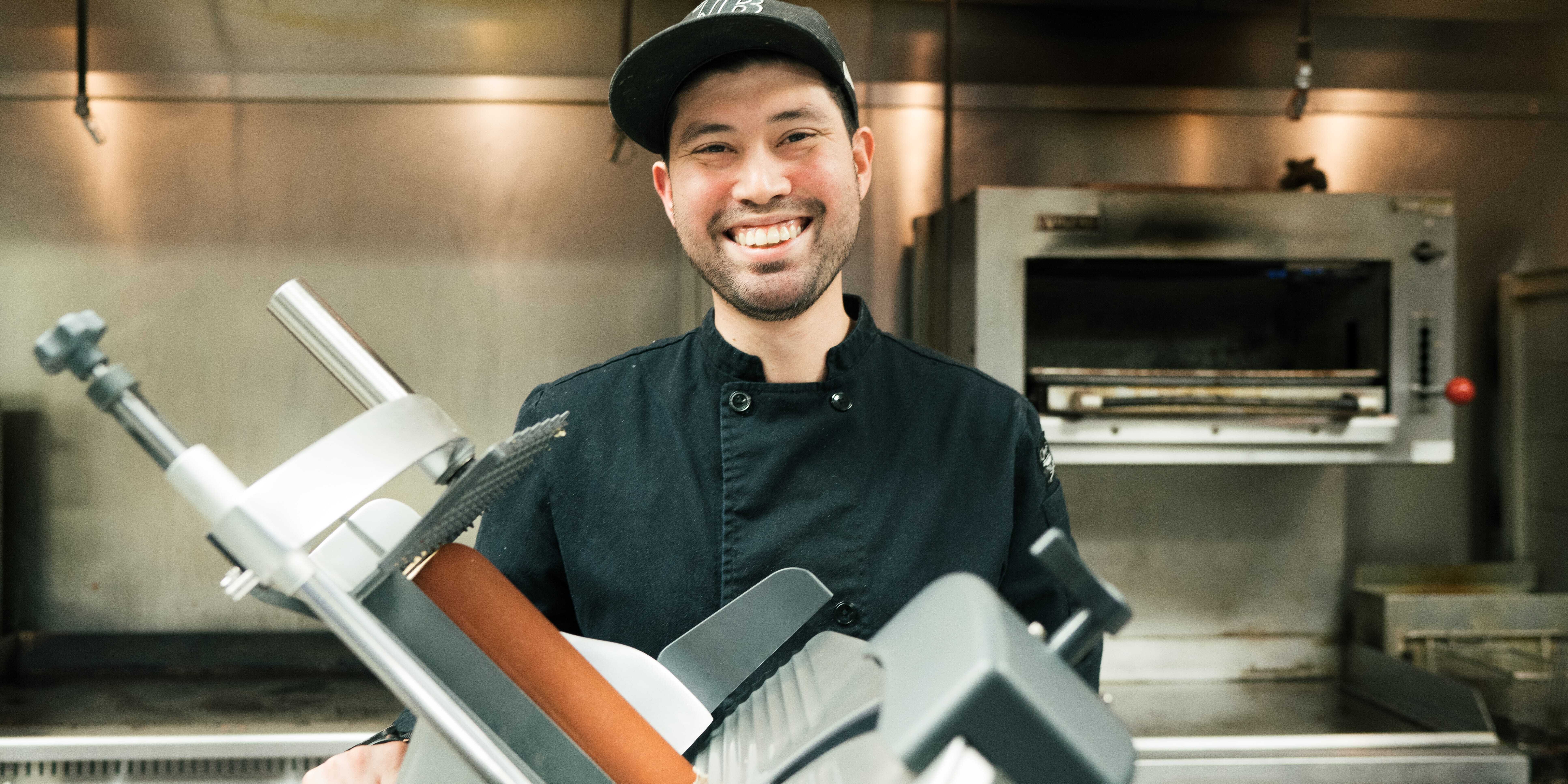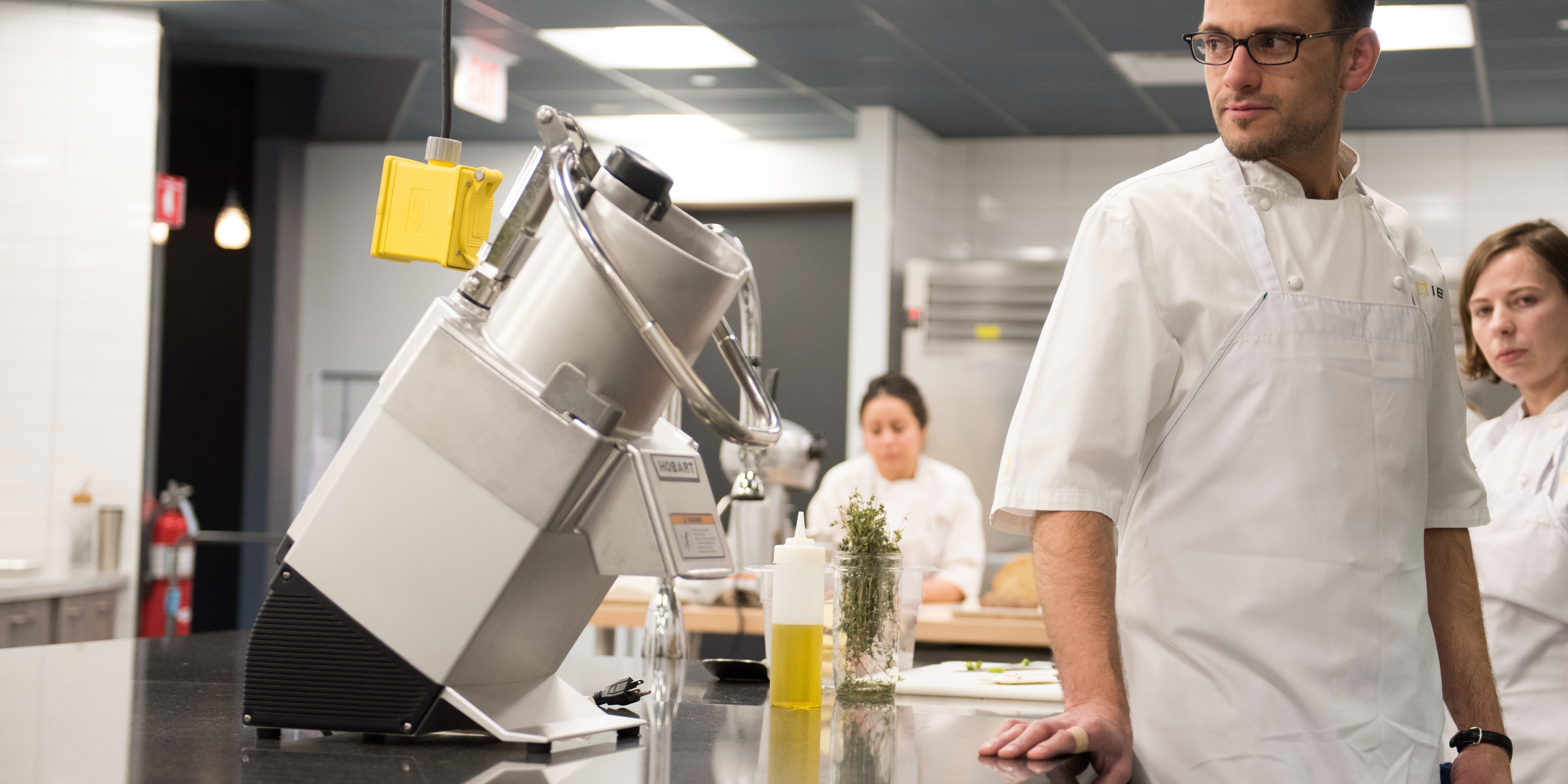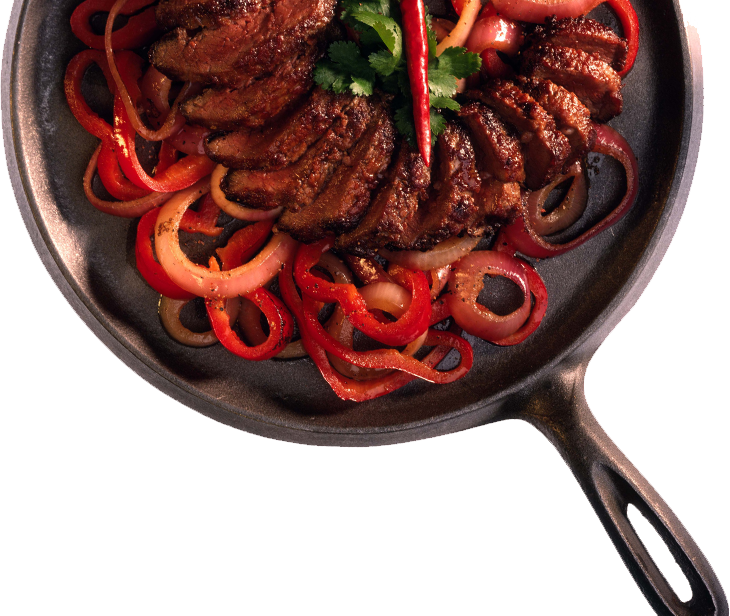Eric Soller, owner of Old Scratch Pizza, knows what it takes to build a pizza restaurant. He opened his first location in 2016 and has since expanded to three more locations in the Greater Dayton, Ohio area. Each restaurant has its own unique style, but all include an open kitchen and communal seating in a large space (approximately 7,000 square feet) — and each is committed to serving customers their Midwesternly Neapolitan style pizza.
Along with the growth of Old Scratch Pizza, Soller has seen an increase in pizza restaurants opening across the country, a situation he attributes, in part, to the COVID-19 pandemic.
“People were stuck at home, and pizza restaurants succeeded because of their delivery and pickup format. At the same time, many people who were at home during this time started making pizzas,” he said. “Then they decided that they liked it so much that they were going to go out and start their own pizza restaurants.”
Soller added that there is also a newfound creativity emerging in the pizza industry, focused on different ingredients.
“I think that there's a new generation of premium pizza offerings,” he explained. “There’s a palette to explore creativity. A lot of the restaurants opening are not your traditional pizza places. It's either wood fired or it's a take on East Coast New York style, but with premium ingredients.”
So, how do you open and operate a successful pizza restaurant? Soller has some advice.
Build a restaurant business plan
While it’s important to have inspiration and drive to open a pizza restaurant, it also takes a disciplined approach, Soller says.
“The most important thing is to have a business plan and a solid understanding of a startup budget,” he explained. “How much is it going to cost to open this restaurant? And nothing will help you more than writing a business plan about what type of restaurant you want to have.”
Soller recommends asking some key questions to help drive that business plan, the first of which is “What kind of pizza will be served?” From there, it’s easier to consider some logistical questions, like:
- What kind of ingredients will I use for my menu?
- Will I buy those ingredients through a premium distributor carrying imported flour and organic tomato products? Or am I going to coordinate with local farms to get fresh produce delivered? Or am I a low-cost value-based pizza brand purchasing through a standard purveyor?
Soller says considering the desired location of the restaurant, the intended customer base and local competition also impacts the business plan and execution. Determine whether the pizza restaurant will be strictly counter service or whether it will provide table service, and whether delivery be an option, either through the business or a third-party.
Develop your pizzeria menu
When it comes to the menu, Soller says to keep it simple.
“There's definitely a trend away from large menus and toward small menus. People can only make so many decisions, and it's way better to have fewer decisions than more,” he said. “Also, limit the number of ingredients you have and make sure you're using them in as many products as possible. Don't have ingredients in the building that you only have on one or two pizzas, unless it’s pepperoni, because it’s not worth it.”
Owner/operators will also have to determine whether they will also offer non-pizza items like appetizers, salads and sandwiches. Factors like kitchen space and available labor factor into that decision.
Essential pizza restaurant kitchen equipment
As part of the upfront planning for a pizza shop, Soller emphasizes the importance of careful equipment selection and making the investment in reputable brands.
“The absolute most important thing about equipment is durability and reliability. It's everything. It’s your whole business,” he said. "Equipment is not something that you should compromise on as far as brand or support. You’re going to get what you pay for. If your mixer goes down, you're dead in the water.”
Soller says building in the expense of a higher quality commercial pizza dough mixer and other equipment into the business plan and financing is a good idea.
“I've talked to other restaurant owners who started off with a cheap mixer and realized it cost more for repairs and service,” he said. “Over the long term, a mixer repair is not only the cost of the service call. It’s a disruption to your business. You could have to close the doors and that is way more expensive.”
The chosen mixer will depend on the type of pizza. For traditional American- or New York-style dough, a planetary mixer is the best choice, while a spiral mixer is used for Neapolitan-style pizza like Soller serves at Old Scratch Pizza. He has a Hobart HSL300 spiral mixer in a central kitchen where staff uses 1500 pounds of flour a week to make dough for all the locations.
For an owner/operator just starting a pizza restaurant, Soller recommends sizing the mixer for future growth. A smaller capacity mixer may be less expensive, but a successful restaurant may soon find that it cannot keep up with the demands of business. Also, overloading a smaller mixer can damage the motor, requiring costly repairs that could be offset by purchasing a larger mixer in the first place.
A Hobart HSL130 spiral mixer, offering 130-pound capacity is commonly used in pizza restaurants serving Neapolitan pizza. The Hobart HL662 planetary pizza dough mixer provides 60-quart capacity, which works well for most establishments.
Soller likes mixers that include a timer and variable speeds to simplify dough production.
In addition to a durable mixer, Soller suggests outfitting a pizza restaurant with a continuous-feed food processor and a bowl-style food processor.
“A continuous-feed food processor offers so much versatility in what you can prep. We slice onions and mushrooms. We dice tomatoes. It’s 10 times faster than manually cutting,” Soller said. “It also offers a level of consistency that you can't achieve by hand and that consistency really feeds into cost savings too. If somebody's slicing a tomato manually, you're not going to get as many slices out of it. That's going to affect your food cost.”
Soller says there is cost savings to be found in shredding blocks of cheese, as well, and notes that Old Scratch Pizza has two Hobart FP250 continuous-feed food processors in most locations.
Soller looks at a bowl-style food processor as a good investment for pizza restaurants who choose to offer non-pizza items. He and his staff rely on a Hobart FP41 for making aioli and hummus. This style machine can also be used for making pesto for a pesto chicken pizza.
For new pizza shops that want to serve sandwiches, too, or slice meats for pizzas, Soller suggests adding a slicer to the kitchen. This equipment can help provide higher quality product than many pre-sliced meats.
“We slice all our sandwich meats with our Hobart HS8 slicer, plus we slice prosciutto, soppressata and salami for our pizzas,” he explained. “We also slice all our bacon on the slicer, big, thick slices and then dice it by hand after.”
As far as a top feature Soller looks for in a slicer, he says that’s easy: a removable blade. Hobart offers several models of slicers with this feature, which provides Zero knife exposure and makes cleaning and sanitizing easier.
Other pizza equipment, like dough rounders, dividers and the appropriate oven should also be researched carefully, according to Soller.
Elevate your pizza shop
While detailed planning and equipment selection is key when opening a pizza restaurant, Soller explains that there are two additional factors that should never be overlooked: training and branding.
“If you're opening a new pizza place, you need to develop systems and processes to make things consistent and that feeds directly into training. How do I train somebody so they can join our company and know everything they need to know to do their job?,” explains Soller. “You need a method to train people and if you do it right, your labor pool will be a lot better because people stick around. There's higher retention for people who know how to do their jobs.”
Soller sees investing in the pizza restaurant’s brand as integral to its success. That includes a high-quality logo and user-friendly website.
“To succeed, you need to have good pizza, but that might be the easiest part of the whole business,” he said. “Training and keeping employees and showing your customers who you are through a well-established brand is just as important. It’s difficult to compete if you don’t understand what your brand is and clearly show your customers what they can expect when dining in your restaurant.”
About the Author
.jpg?width=67&height=67&name=Bilger%20Carolyn%201%201x1-2_%20(002).jpg) Carolyn Bilger is the marketing director for Hobart – Food Preparation Products. She has been with Hobart since 2015 and sets the strategy for marketing and new product development for the full line of Hobart food preparation equipment. See all her blogs here.
Carolyn Bilger is the marketing director for Hobart – Food Preparation Products. She has been with Hobart since 2015 and sets the strategy for marketing and new product development for the full line of Hobart food preparation equipment. See all her blogs here.





-min.jpg)




